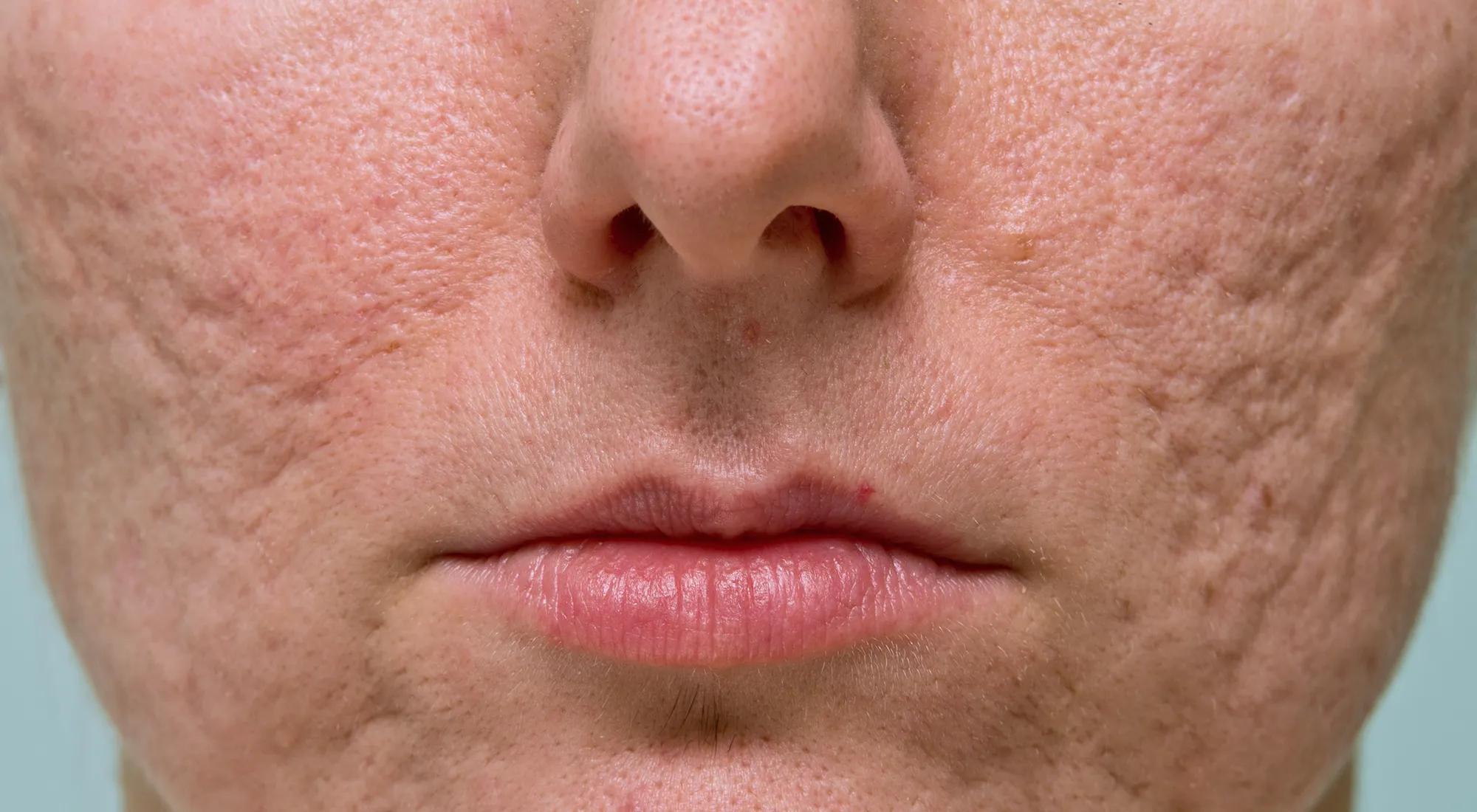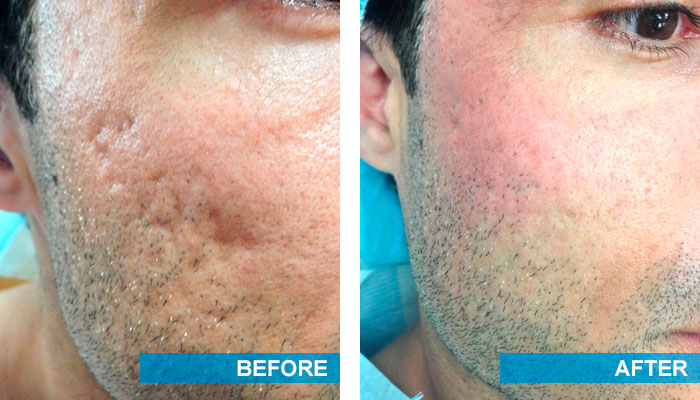Advanced Acne and Acne Scars Treatment: Say Goodbye to Acnes
Advanced Acne and Acne Scars Treatment: Say Goodbye to Acnes
Blog Article
Discovering Skin Problems: Treating and identifying Acne Scars for Healthier Skin
Acne marks represent a significant problem for individuals looking for to maintain healthy skin, as they can influence both look and self-worth. Comprehending the various kinds of scars, from atrophic to hypertrophic, is crucial for figuring out ideal treatment choices.
Comprehending Acne Marks
Understanding acne scars is important for anybody who has experienced extreme acne, as these marks can have an enduring influence on both physical look and psychological health. When the skin undertakes inflammatory responses throughout active acne sores, acne marks create. The severity of scarring is typically affected by variables such as the type of acne, its duration, and individual skin attributes.
The body's all-natural recovery procedure can cause either atrophic marks, which appear as depressions in the skin, or hypertrophic scars, which are increased and result from overproduction of collagen. Furthermore, the mental toll of acne marks need to not be underestimated; lots of people report feelings of embarrassment, stress and anxiety, and decreased self-worth. This psychological worry can affect social interactions and overall lifestyle.
Addressing acne scars requires a thorough understanding of their development and effect. Recognition of the possibility for long-lasting effects connected with without treatment scars can inspire people to look for proper treatments. Early treatment and effective management approaches can substantially improve skin look and boost mental durability, emphasizing the significance of understanding the intricacies surrounding acne scars.
Sorts Of Acne Scars
Acne scars can be classified into distinct kinds, each displaying distinct qualities and calling for certain treatment approaches. The main types of acne marks consist of atrophic, hypertrophic, and keloid scars.

Hypertrophic scars, in contrast, are increased over the skin level and are the result of excessive collagen manufacturing throughout the healing procedure. They normally remain within the limits of the original acne sore. Keloid scars are comparable yet extend beyond the original injury website, developing bigger, increased locations that can be itchy or painful.
Understanding these kinds of marks is vital for selecting suitable treatment options. Different scars may react better to particular treatments, such as laser treatments, fillers, or medical treatments, emphasizing the significance of a tailored approach to acne scar administration.
Identifying Your Scars
When examining the appearance of your skin, it is vital to properly determine the kind of scars present, as this will certainly inform one of the most reliable therapy approach. Acne marks usually come under 2 groups: hypertrophic and atrophic scars. Atrophic scars, which are one of the most common, look like depressions or impressions on the skin. These can even more be identified into ice-pick marks, boxcar scars, and rolling scars, each displaying distinct characteristics and calling for different techniques for analysis.
Hypertrophic scars, on the other hand, are elevated and happen as a result of excessive collagen production during the recovery process. Identifying the details attributes of your scars-- such as structure, width, and deepness-- is vital for correct identification. Additionally, consider the circulation of scars throughout your skin, as this can indicate the extent and period of the acne condition.
Involving with a dermatologist can offer important understandings right into the nature of your marks, aiding in the distinction in between numerous types. An extensive understanding of your scars will eventually lead to a more customized and effective therapy plan, guaranteeing a more clear and healthier complexion.
Treatment Options Available
Determining the particular kind of acne marks existing on your skin prepares for exploring reliable therapy alternatives. Common sorts of acne scars include atrophic (depressed), hypertrophic (raised), and post-inflammatory erythema.
For atrophic scars, choices such as chemical peels, see this site microneedling, and laser resurfacing are widely utilized. Chemical peels off use acids to get rid of the outer layer of skin, advertising new cell development.
Hypertrophic scars can be treated with corticosteroid injections to flatten the scar or laser therapy to decrease redness and enhance look. acne and acne scars treatment. Silicone gel sheets and pressure dressings may likewise assist in taking care of increased marks
Furthermore, dermal fillers can briefly complete anxieties from atrophic marks, while medical excision may be proper for severe instances. Each treatment option has its benefits and factors to consider, making it important to seek advice from a skin specialist. They can offer tailored suggestions based on the kind and severity of your scars, in addition to your skin type and general health.
Tips for Prevention
Efficient avoidance methods can considerably decrease the probability of developing acne scars. learn the facts here now Using non-comedogenic items aids prevent clogged pores, which can exacerbate acne.
Staying clear of the desire to pick or stand out acne lesions is important, as this can cause deeper skin damage and boost the danger of scarring. Instead, consider using a cool compress or over-the-counter therapies to reduce swelling and inflammation.
Sunlight security is another important element of prevention; ultraviolet (UV) rays can dim scars and impede the recovery process. Applying a broad-spectrum sunscreen with at the very least SPF 30 daily can safeguard the page skin and advertise even healing.
Finally, keeping a balanced diet rich in vitamins, minerals, and antioxidants supports skin wellness and healing. Remaining hydrated and managing anxiety levels can additionally play a significant duty in decreasing acne flare-ups. By carrying out these methods, individuals can substantially lessen their chances of creating acne scars.

Verdict
Finally, understanding and identifying acne marks is important for effective treatment and achieving much healthier skin. Various kinds of acne marks, including hypertrophic and atrophic marks, demand specific interventions customized to specific demands. Therapy options variety from chemical peels and microneedling to corticosteroid shots, emphasizing the significance of getting in touch with a skin doctor. Additionally, adopting a gentle skin care regimen and shielding the skin from UV exposure can significantly add to the avoidance of further scarring and overall skin health and wellness.
The body's all-natural healing process can result in either atrophic scars, which show up as clinical depressions in the skin, or hypertrophic scars, which are raised and result from overflow of collagen. They are additional divided into three subtypes: ice pick marks, boxcar marks, and rolling marks. Acne scars normally drop into 2 classifications: atrophic and hypertrophic scars. These can better be identified right into ice-pick marks, boxcar marks, and rolling scars, each showing distinctive attributes and needing various methods for assessment.
Various kinds of acne scars, including hypertrophic and atrophic marks, demand particular treatments customized to individual needs.
Report this page